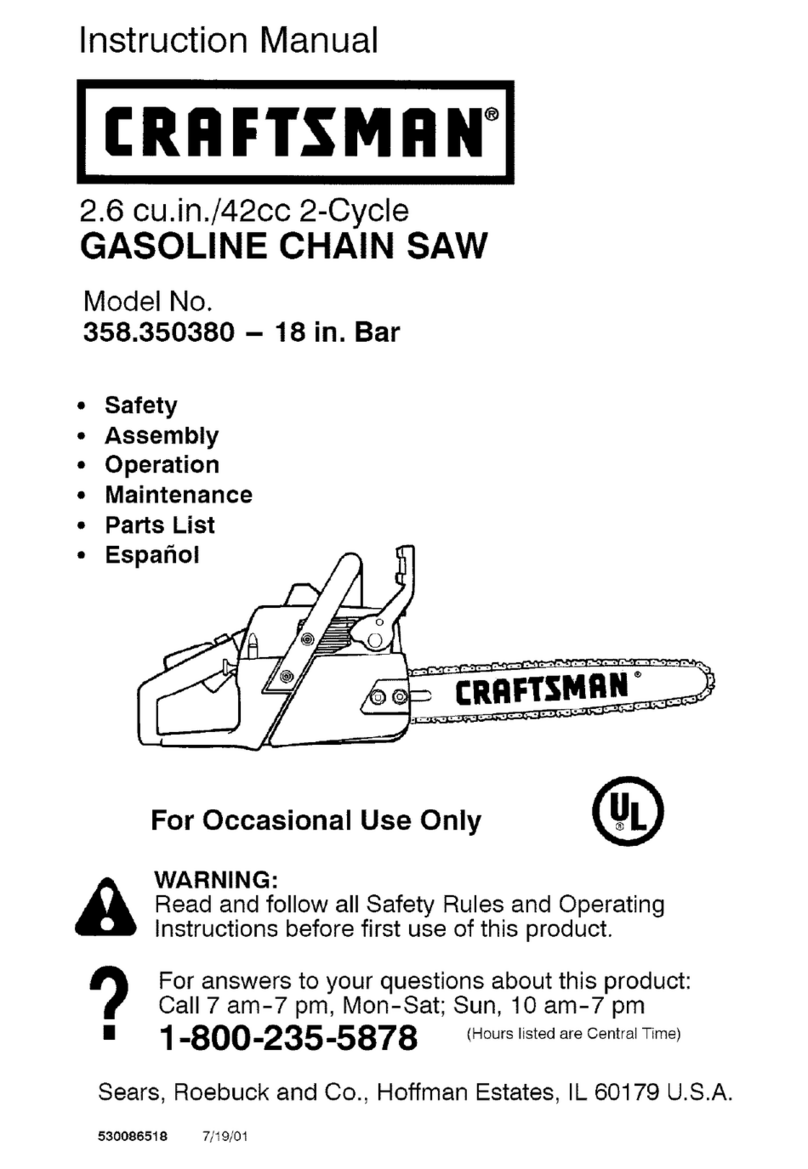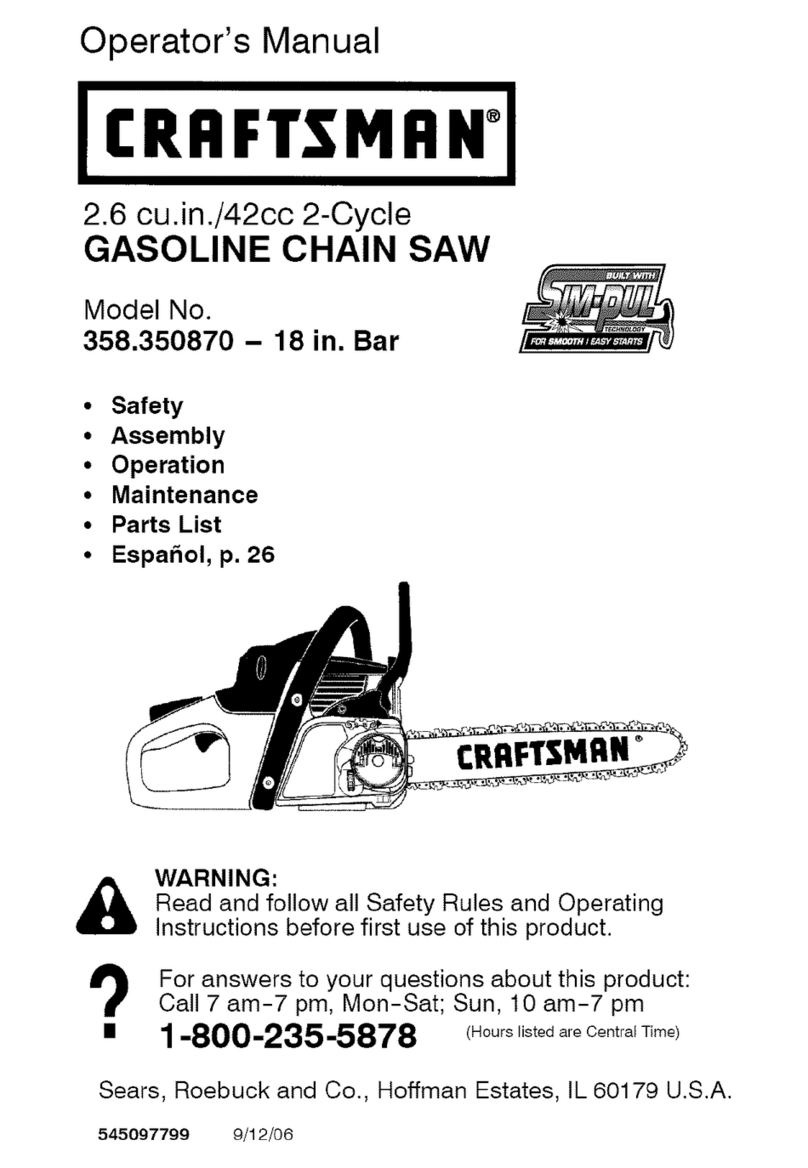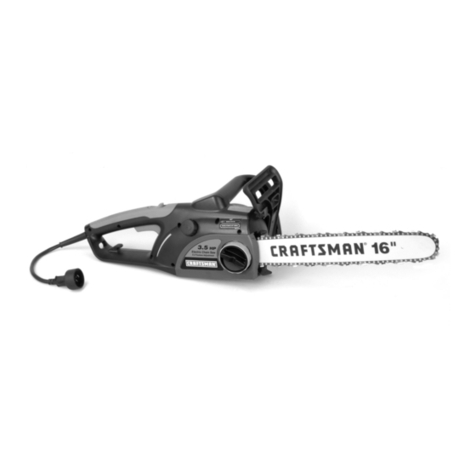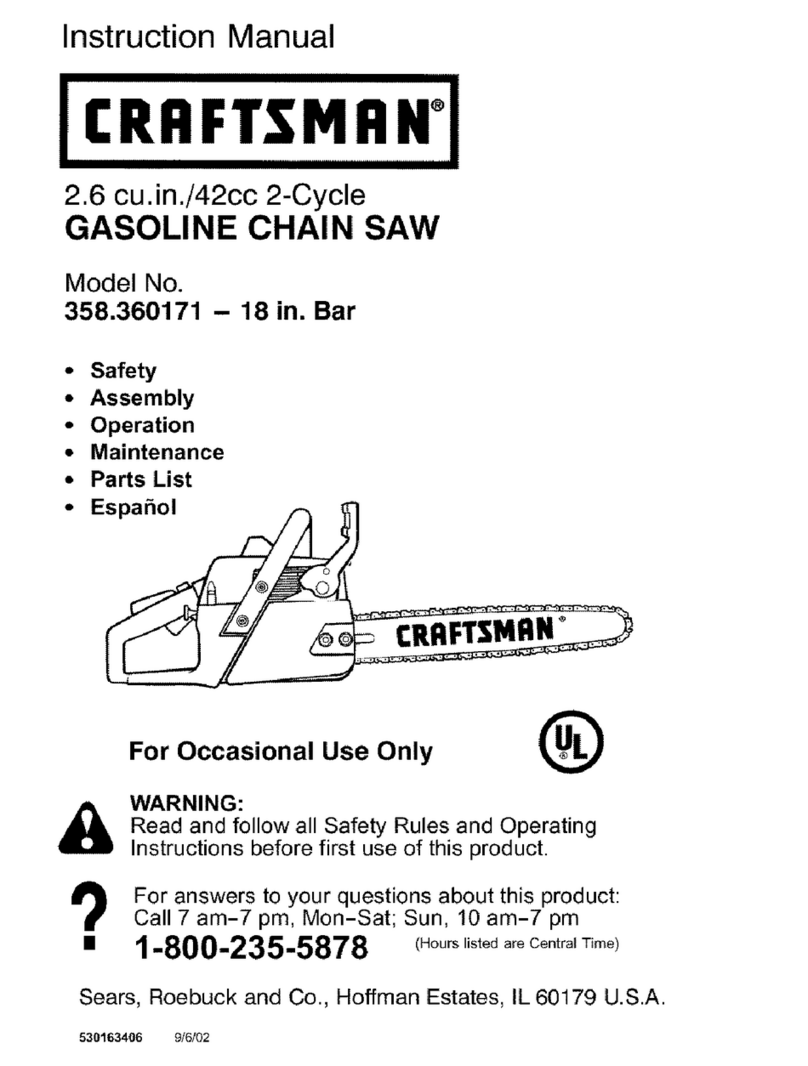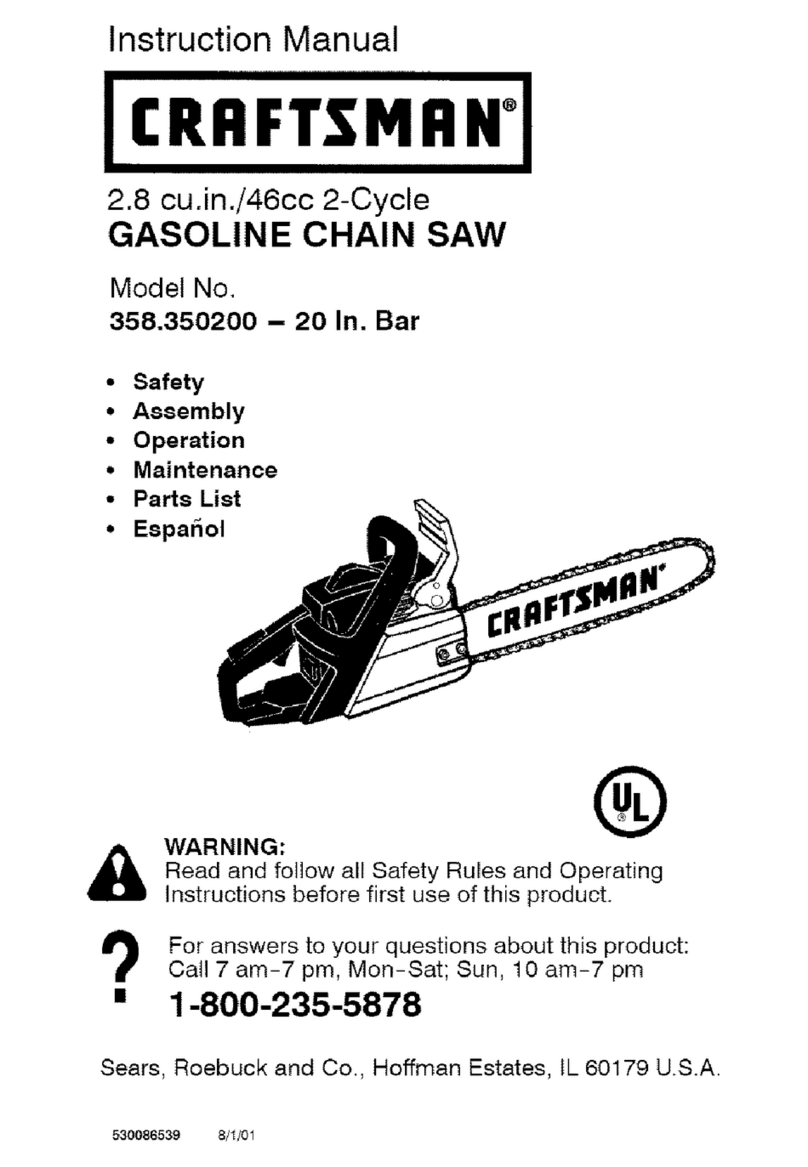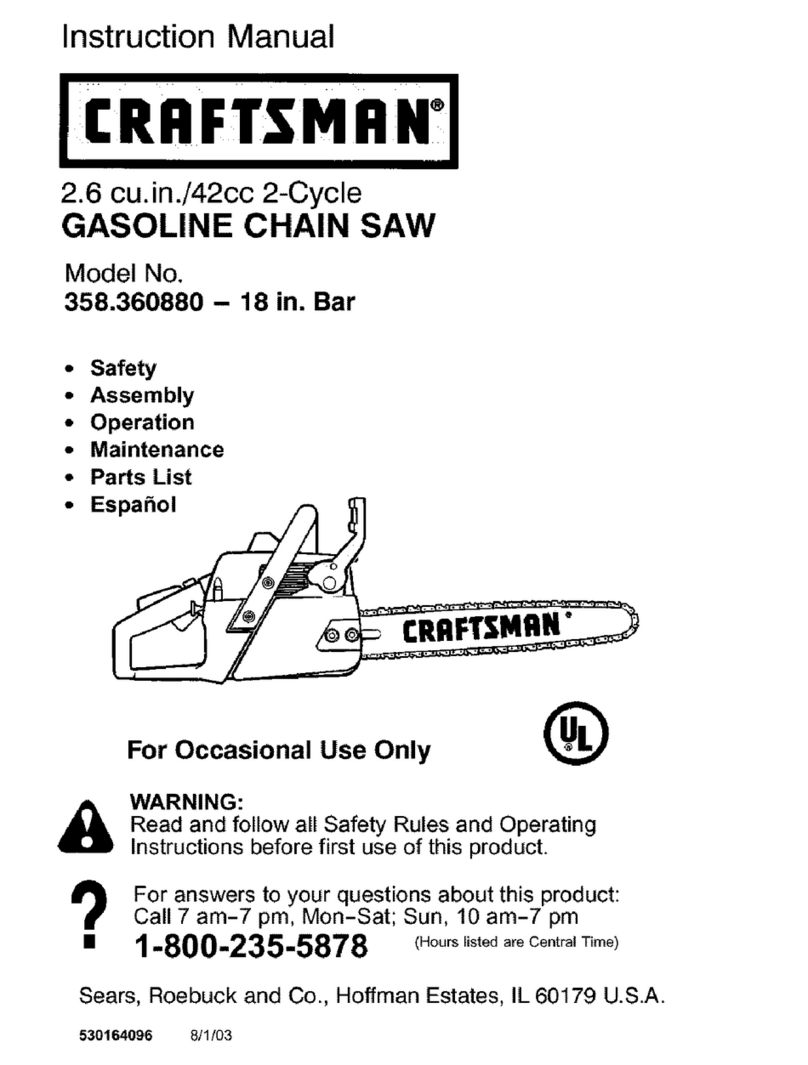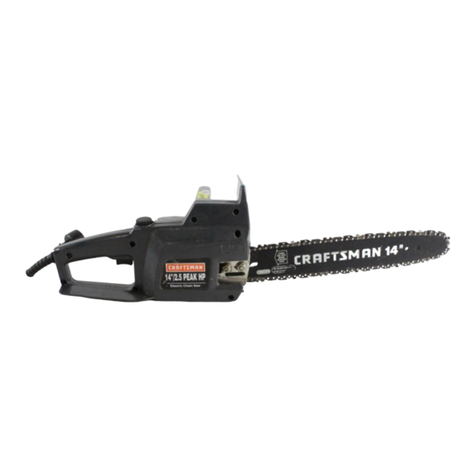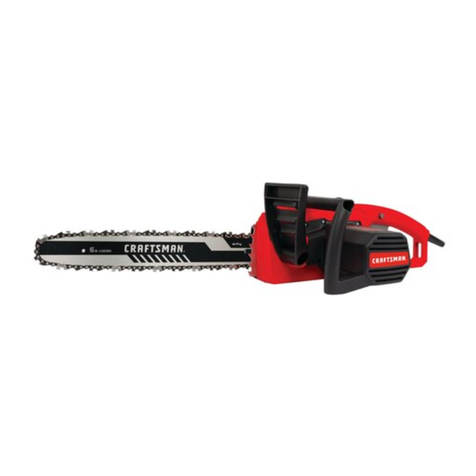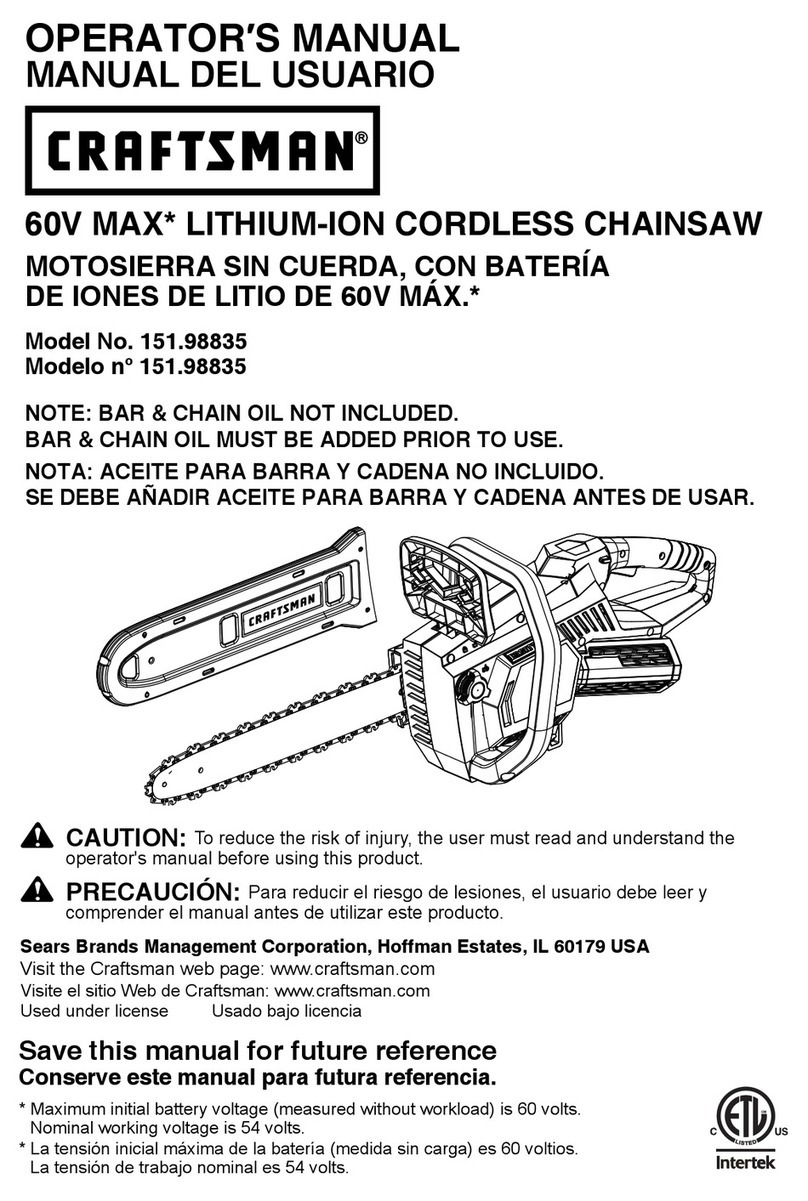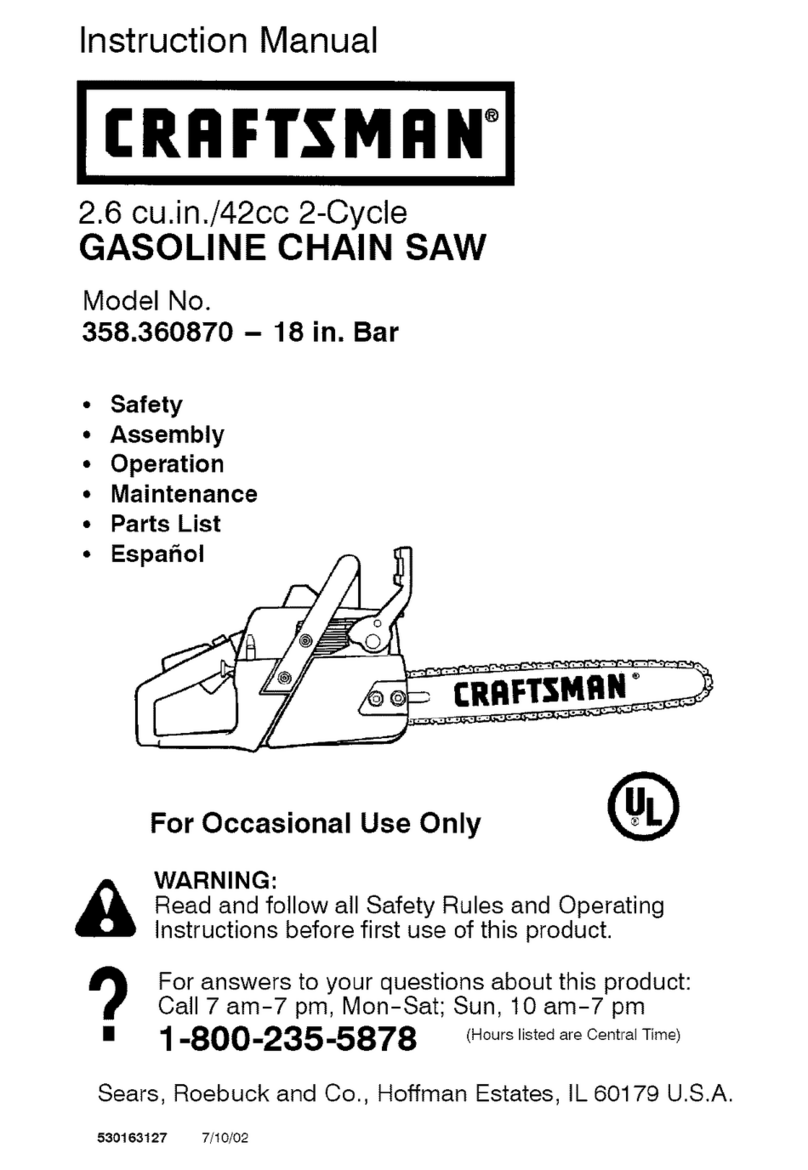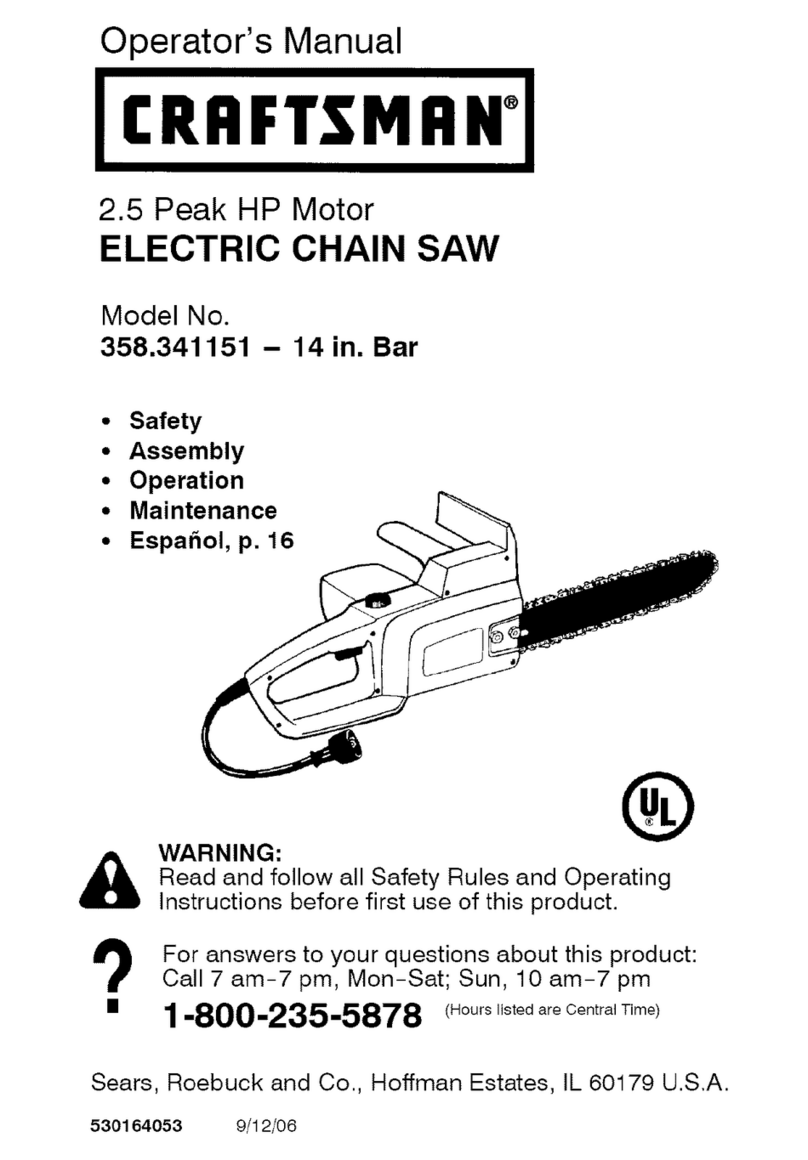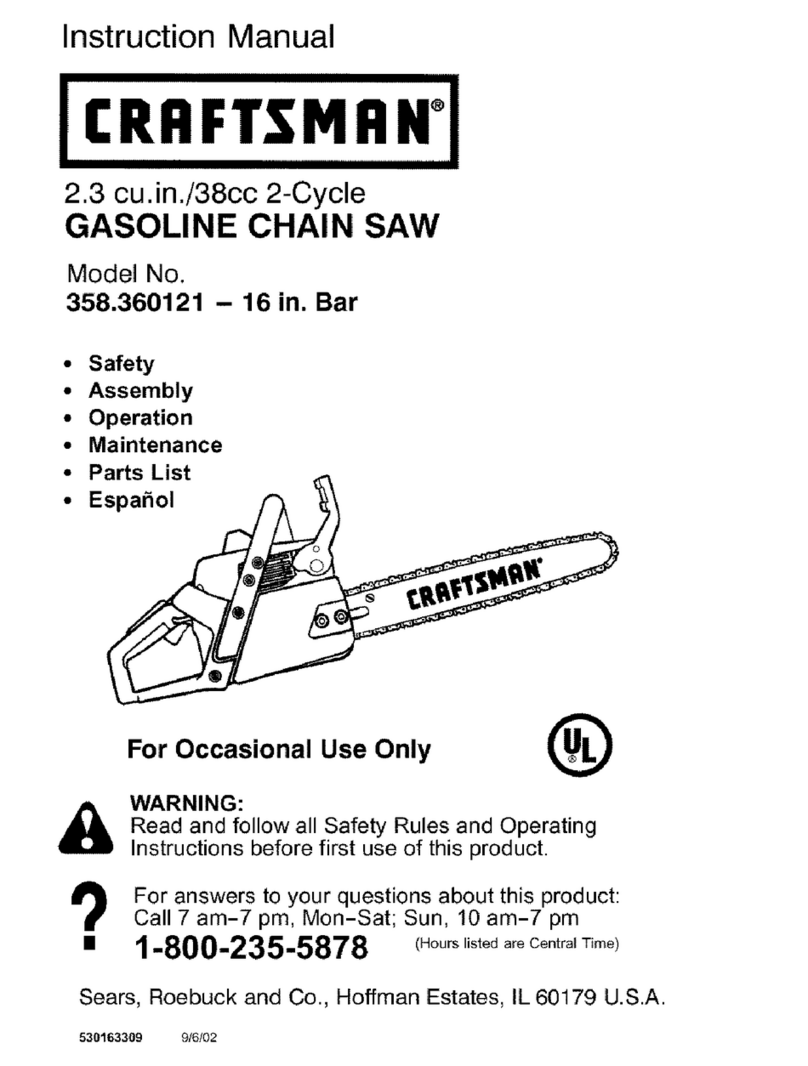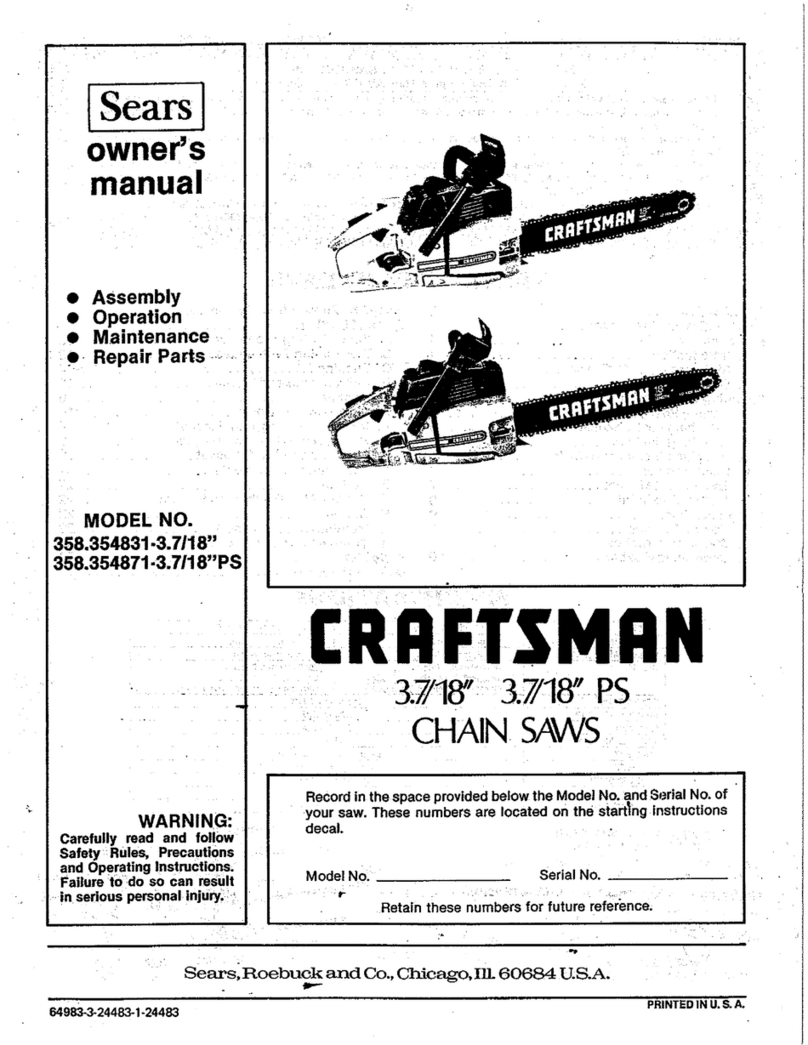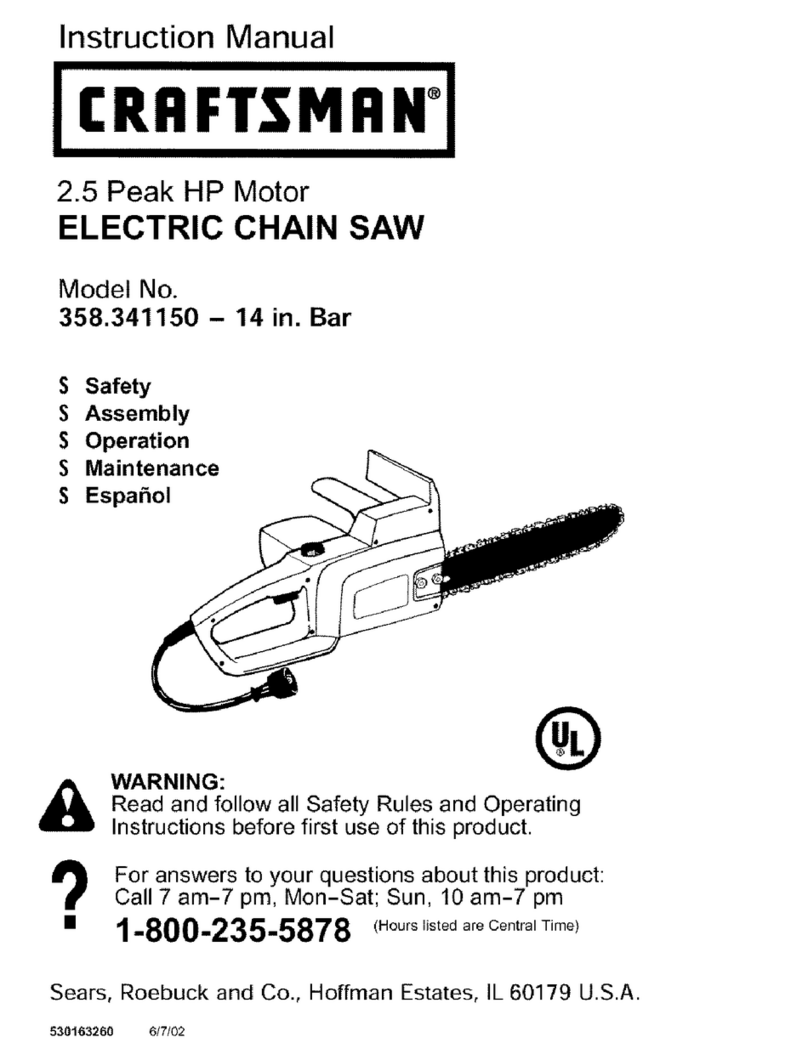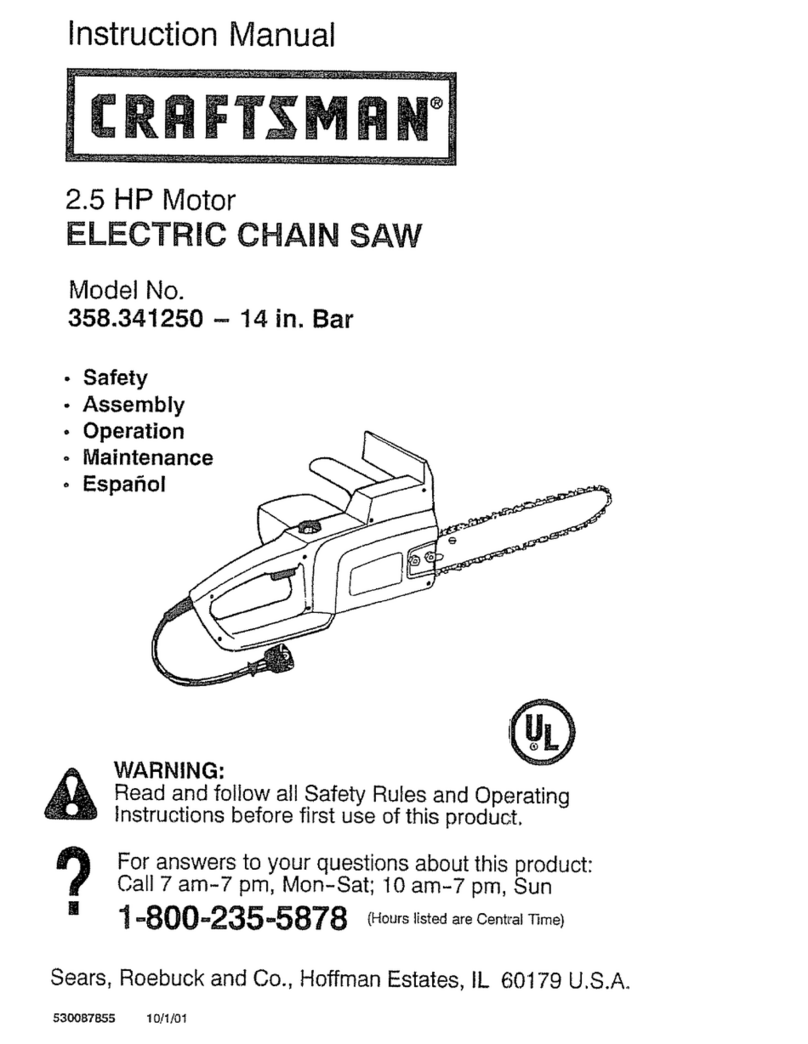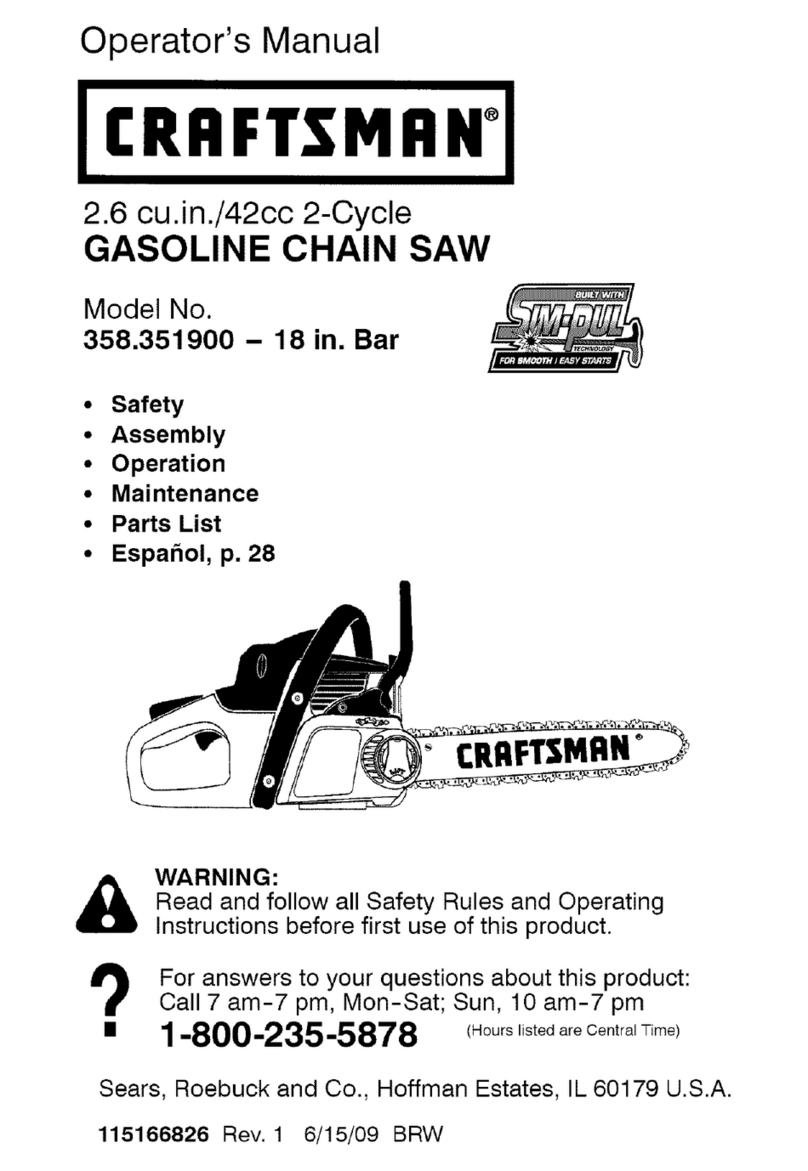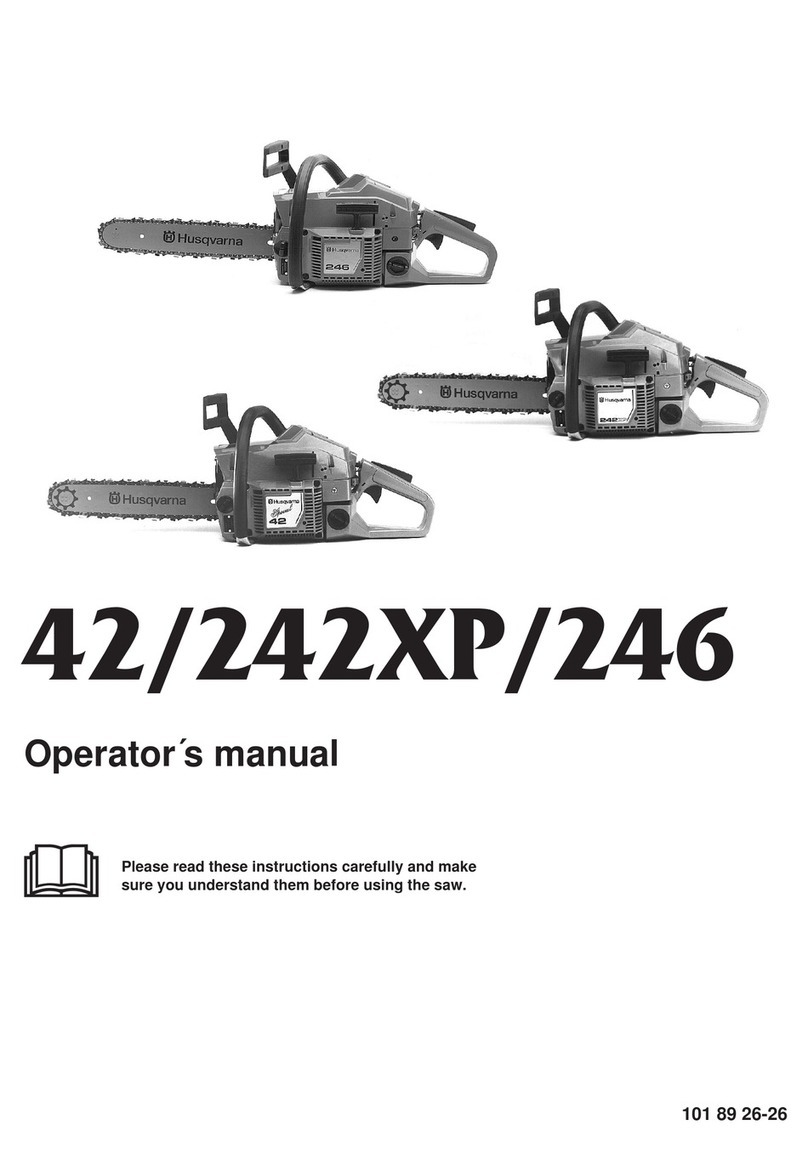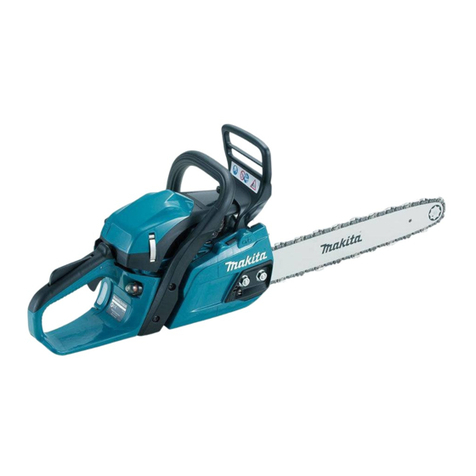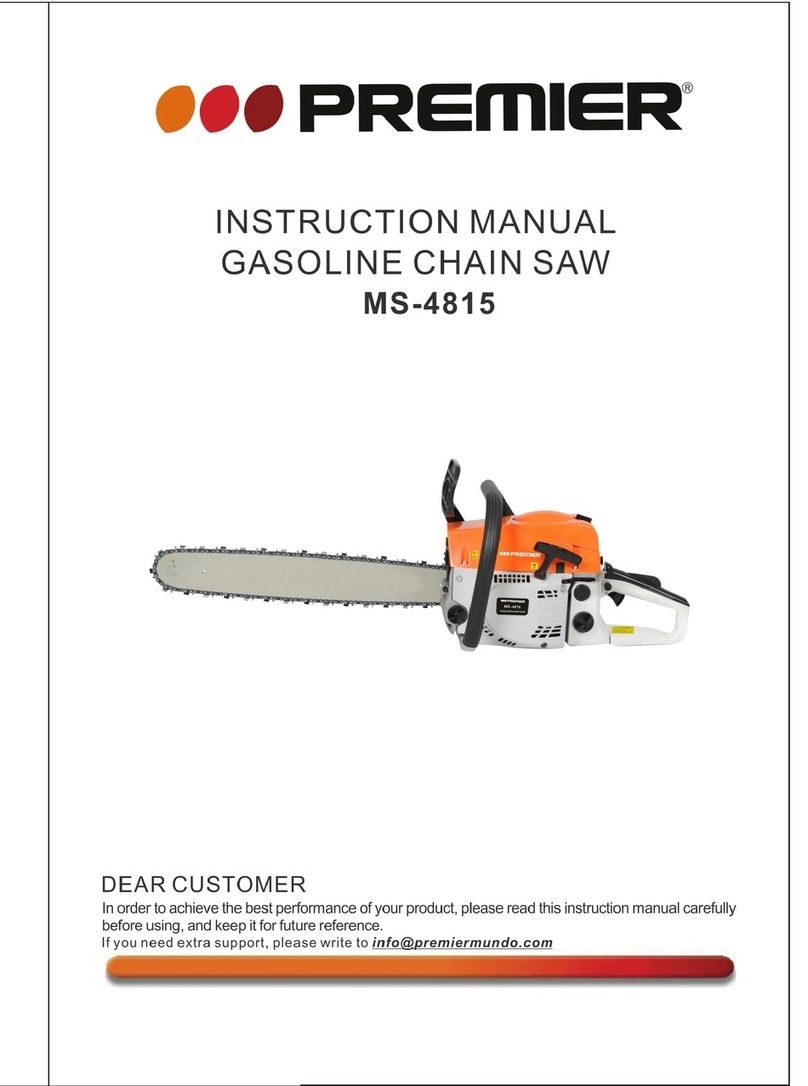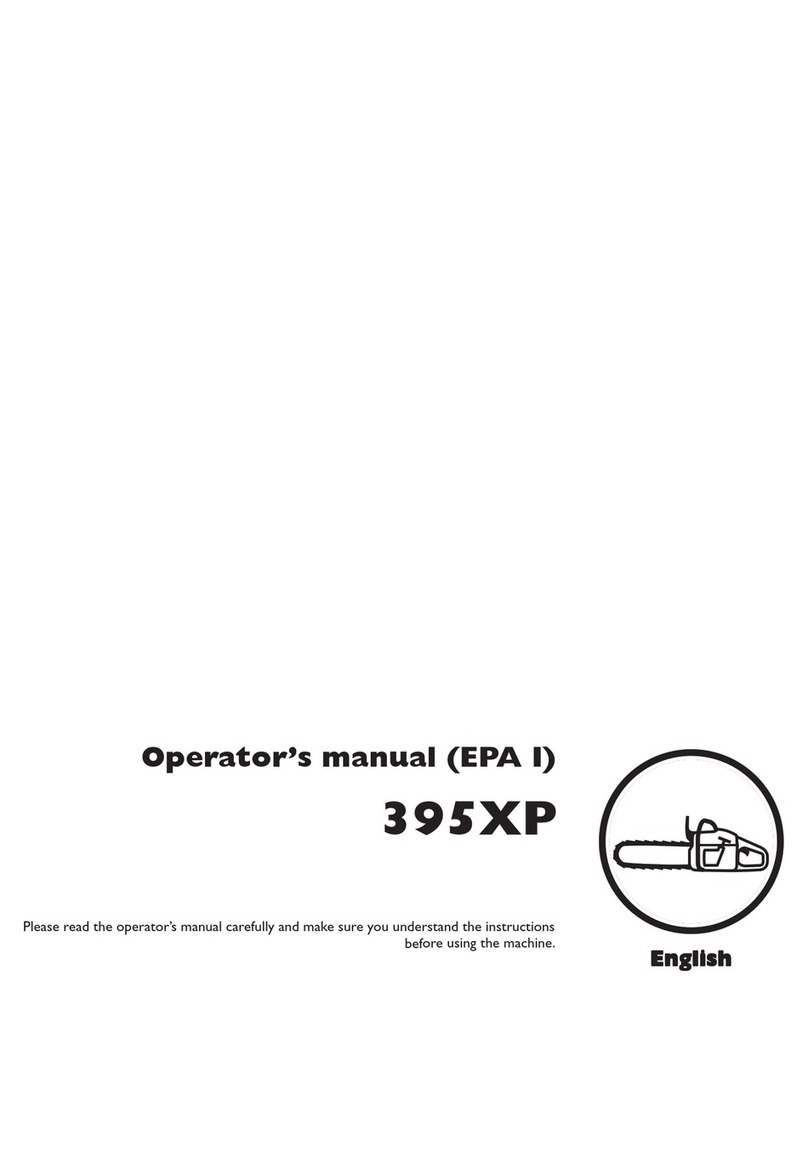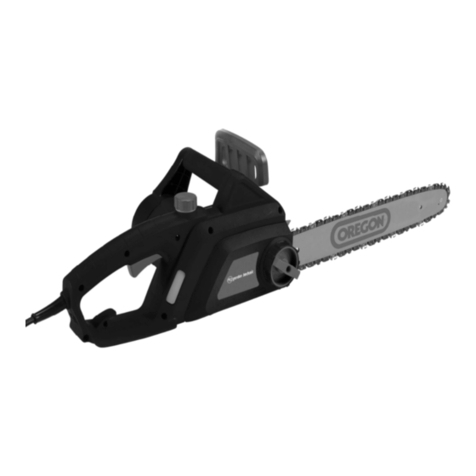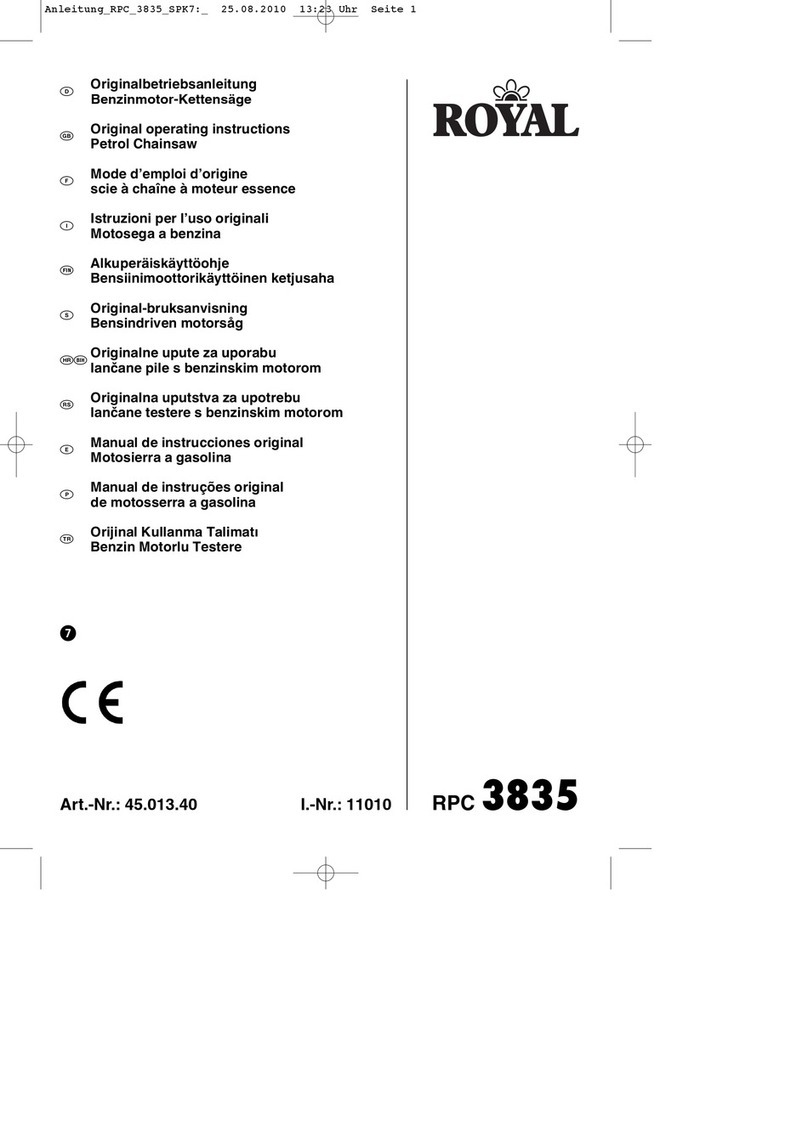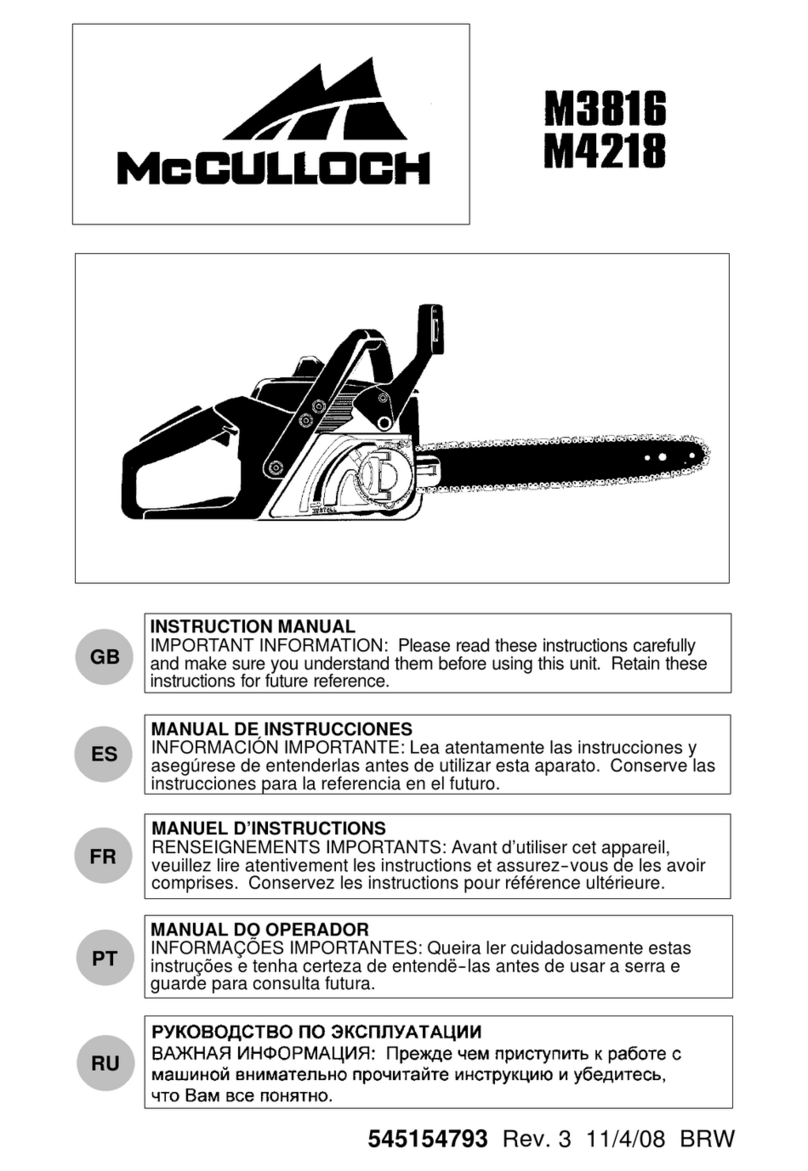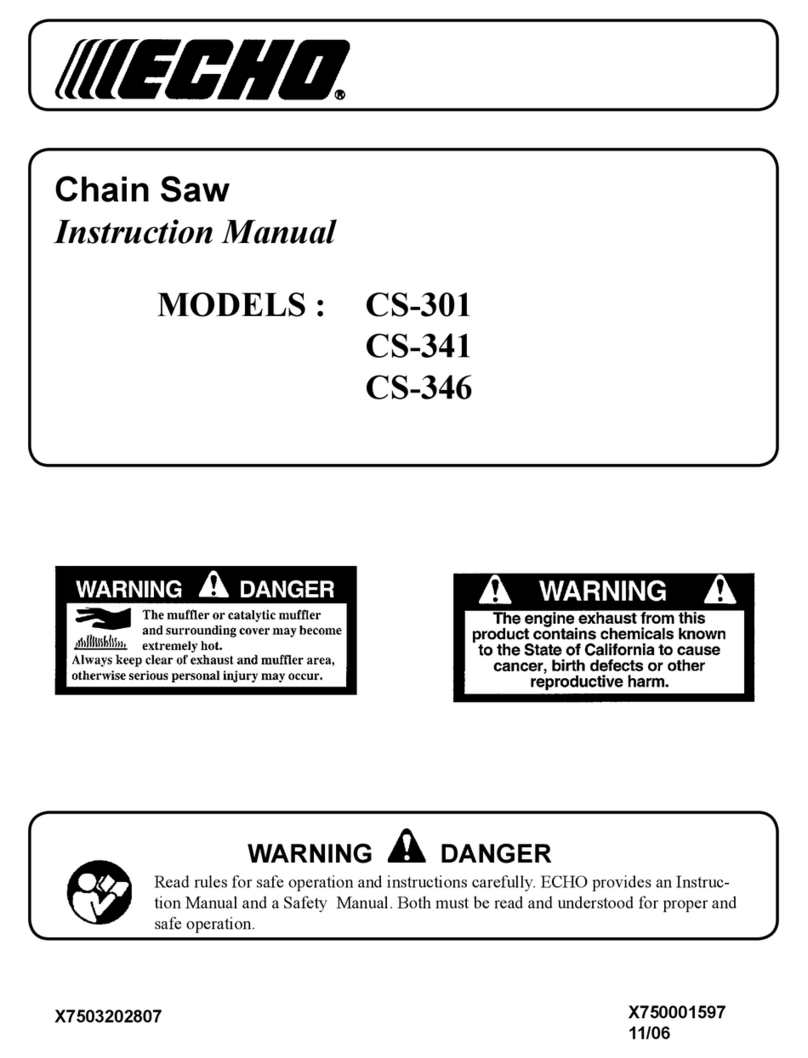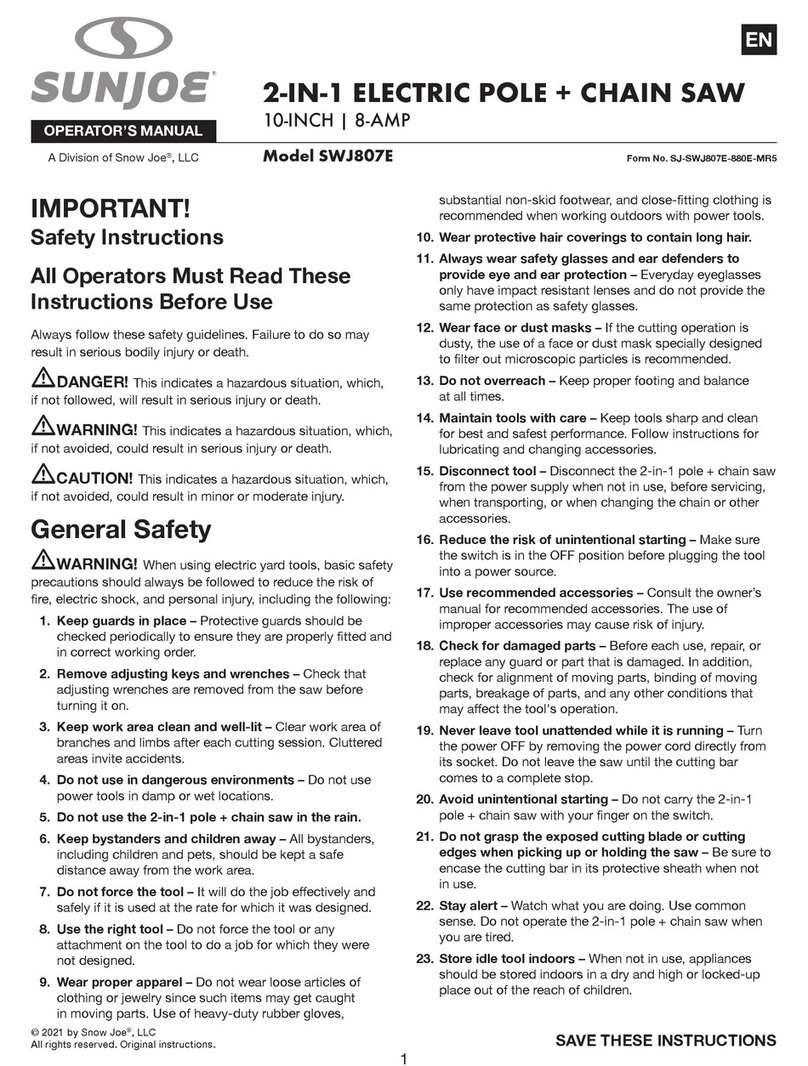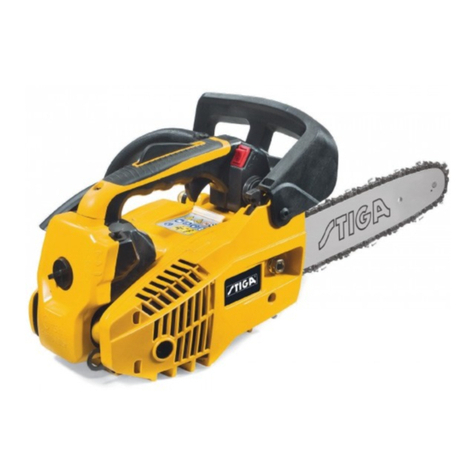hearing,Securehairaboveshoulder
length.Donotwearlooseclothingor
jewelry.Theycangetcaughtinmov-
ingparts.
• Keepallpartsofyourbodyawayfrom
thechainwhenthesawisrunning.
• Donothandleoroperateachainsaw
whenyouarefatigued,ill,orupset,or
ifyouhavetakenalcohol,drugs,or
medication.Youmustbeingood
physicalconditionandmentallyalert.
Ifyouhaveanyconditionthatmight
beaggravatedbystrenuouswork,
checkwithdoctorbeforeoperating.
Watchwhatyouaredoing.Usecom-
monsense.
• Donotstartcuttinguntilyouhavea
clearworkarea,securefooting,and
especiallyifyouarefellingatree,a
retreatpath,Keepworkareaclean.
Clutteredareasinviteinjuries.
OPERATE YOUR SAW SAFELY
• Do not operate with one hand, Seri-
ous injury to the operator, helpers, or
bystanders may result from one-
handed operation. A chain saw is in-
tended for two-handed use.
• Do not operate saw from a ladder or
in a tree unless you are specifically
trained to do so.
• Make sure the chain will not make
contact with any object while starting
the saw. Never try to start the saw
when the guide bar is in a cut.
• Do not put pressure on the saw, es-
pecially at the end of the cut. Doing
so can cause you to tose control
when the cut is completed. Allow the
chain to cut for you. Exert only light
downward pressure.
• Stop the saw before setting it down.
• Hand carry saw only when motor is
stopped. Carry the chain saw by the
front handle with the saw stopped, fin-
ger off the switch, the guide bar and
saw chain to the rear.
• Keep all parts ofthe body away fiom
the saw chain when the motor is oper-
ating.
• Don't force chainsaw, tt will do the job
better and safer at the rate for which it
was intended.
• Use the right tool, cut wood only.
Don't use chain saw for purpose not
intended - for example - don't use
chain saw for cutting plastic, masonry,
non-wood building materials.
• Use extreme caution when cutting
small size brush and saplings be-
cause the tender material may catch
the saw chain and be whipped toward
you or pull you off balance.
• When cutting a limb that is under ten-
sion be alert for spring back so that
you will not be struck when the ten-
sion in the wood fibers is released.
MAINTAIN YOUR SAW IN GOOD
WORKING ORDER
• Have all chain saw service performed
by a qualified service dealer except
the items listed in the maintenance
section of this manual,
• Make certain the saw chain stops
moving when the trigger switch is re-
leased,
• Keep the handles dry and clean and
free from oil and grease.
• Keep oil cap and fasteners securely
tightened.
• Use only Craftsman accessories and
replacement parts as recommended.
Never modify your saw.
• Maintain chain saw with care.
• Keep tools sharp and clean for better
and safer performance.
• Follow instructions for lubricating and
changing accessories.
• Disconnect chain saw when not in
use, before servicing and when
changing accessories and attach-
ments, such as saw chain and guard,
• Check damaged parts. Before further
use of the chain saw, a guard or other
part that is damaged should be care-
fully checked to determine that it will
operate properly and perform its in-
tended function. Check for alignment
of moving parts, binding of moving
parts, breakage of parts, mounting
and any other conditions that may af-
fect its operation. A guard or other
part that is damaged should be prop-
erly repaired or replaced by an autho-
rized service center unless otherwise
indicated elsewhere in the instruction
manual.
• Do not operate a chain saw that is
damaged, improperly adjusted, or is
not completely and securely as-
sembled.
• When not in use, chain saws should
be stored in a dry, and high or
locked-up place - out of the reach of
children.
• Store idle chain saw.
• When storing saw, unplug and use a
scabbard or carrying case.

